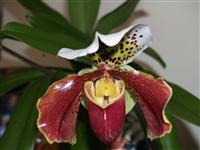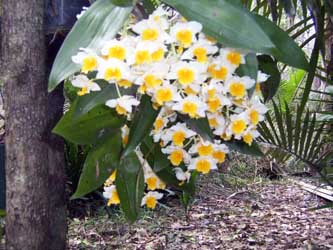Orchids
 There are between 20,000 and 30,000 orchid species known to man, coming from almost every corner of the world. In fact, the only locations in the world that are not home to at least one species of orchid are the driest arid zones and the Arctic and Antarctic. Some orchids are valued for their commercial properties, but most are admired solely for their unique beauty. With so many orchids in existence, it certainly gives the home gardener the opportunity to grow this lovely plant in a range of situations. Read more below
There are between 20,000 and 30,000 orchid species known to man, coming from almost every corner of the world. In fact, the only locations in the world that are not home to at least one species of orchid are the driest arid zones and the Arctic and Antarctic. Some orchids are valued for their commercial properties, but most are admired solely for their unique beauty. With so many orchids in existence, it certainly gives the home gardener the opportunity to grow this lovely plant in a range of situations. Read more below
Orchid Culture
Cut Flower Orchids
Tissue Culture
Plant Breeding
Extract following is from John Mason's Book "Growing Orchids: A Beginners Guide":

To purchase this book click here
Orchids can be classed according to the growing medium from which they feed. They include:
-
Epiphytic - growing above ground with another plant as a support, but not as a source of food (non-parasitic). These plants spread roots on the surface of trunks (or internally through crevices) to obtain nutrients in the rainwater as it trickles down the trunk. Tropical climate species of orchids are primarily epiphytic.
-
Lithophytes - these plants grow on rocks. They normally obtain their subsistence from well matted organic matter on or between the rocks.
-
Terrestrial - have a below ground root system, as with the majority of plants. Most cool climate orchids grow this way.
 The flowers of orchids are as diverse as the plants themselves, ranging from small, nearly inconspicuous blooms to large, long lasting flowers and flower stems. Some types of orchids are known to flower and provide colour for up to 2 months.
The flowers of orchids are as diverse as the plants themselves, ranging from small, nearly inconspicuous blooms to large, long lasting flowers and flower stems. Some types of orchids are known to flower and provide colour for up to 2 months.
If you choose the appropriate orchids for your locality, they are very easy plants to grow, often requiring very little attention once established in a suitable position. This doesn''t mean they will grow better if neglected, but they will often survive neglect better than many other types of orchids.
The best approach to growing a particular type of orchid is to look at it''s natural habitat, and try to recreate similar conditions. In cool areas, most species will need protection from extreme cold, and in hot climates protection from direct sunlight is essential. For this reason, shade houses and well ventilated greenhouses are frequently used for orchid growing. Orchids also perform well as pot plants, and are also a nice addition to ferneries and palm plantings.
Orchids that are suitable for cool climates include Cymbidium, Dendrobium and Pleonie species, while Dendrobiums, Vandas and Cattleyas are good choices for warm areas. But, as with any other plant, with creation of the right microclimate and good management, the possibilities are endless.
For this and other Orchid Books,
visit our online bookshop click here
You may also be interested in....